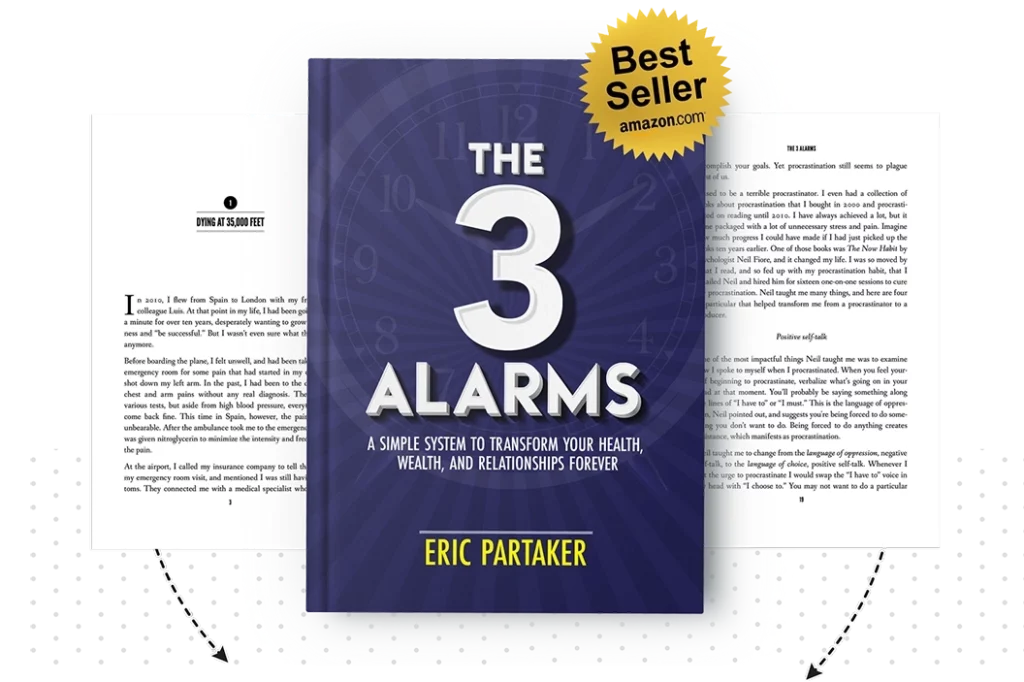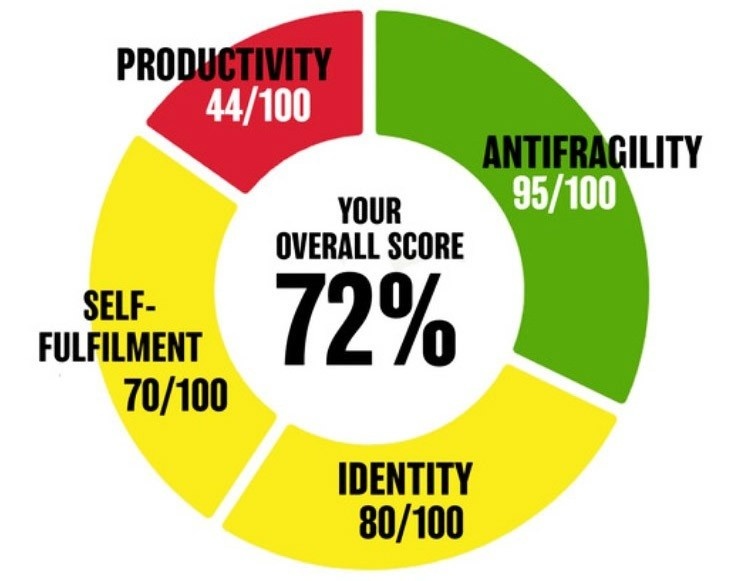“That’s two hours I’m never getting back,” you mutter under your breath, as you stroll out of the meeting room.
It’s the end of the quarter. You are already strapped for time. Now, you are spending a big chunk of it in a meeting with senior leaders.
At the meeting, your CFO says budgets must be trimmed; your CMO doesn’t like what that would do to paid ad campaigns. The Sales Manager asks for headcount to improve the top line; the HR Director wants to hold off on hiring until restructuring has been completed.
After an incessant back-and-forth, you come out of the meeting confused, frustrated, and worn out. And you wonder, “What was even the point of that?”
Sound familiar?
If you’ve been a leader for any reasonable amount of time, you have likely experienced scenarios like the one above. According to Harvard Business Review, senior executives at the average firm spend three days a month working as a collective. In those three days, they spent less than three hours talking about strategy. The rest of the time is spent putting out fires. This is not what you want from your leadership meetings.
Leadership meetings should be less about having debates and more about making decisions. If you don’t make decisions, you don’t have a strategy. And working without a strategy is like driving without a destination – you will go nowhere. The cost of delayed decisions is high, including, amongst other things, resource wastage, bad investments, and product and business stagnation.
In this article, I am going to talk to you about the significance of leadership meetings, how you should prepare for and conduct one, how to follow up after a meeting, and share some tips to help you get the most out of your meetings.
What are Leadership Meetings and Why Are They Important?
Leadership meetings bring together an organization’s top decision-makers (senior executives, managers, team leaders, etc.) to review the firm’s current performance and determine future direction. Together, they make decisions that have a bearing on the company’s financial security and growth.
Decisions have two important attributes: quality and speed. The best decisions are the ones that find a balance between the two.
A quality decision that’s made too late can result in missed opportunities. Ex: A technology company conducts a product audit that reveals they may need to upgrade to cloud-based solutions. The team then spends months deliberating and conducting extensive research. By the time they decide to launch a cloud solution, the market is saturated with competing solutions.
A quick decision that is made poorly can have drastic consequences. Ex: A retail company panics after a sudden drop in sales and decides to immediately implement price cuts across the board. The cuts negatively affect brand perception, as customers associate the price reduction with a drop in quality.
You cannot balance quality with speed without a measure of deliberation. But the discussion must be limited to a finite period. According to an HBR study of 187 companies worldwide, top executives overwhelmingly felt that they spent too much time at meetings discussing issues rather than making decisions. Issues are prioritized by recency. And with no limits to the amount of discussion, agendas end up being transferred from one meeting to another.
Unresolved agenda items and lack of long-term planning can have implications that go beyond financial performance. They can leave participants feeling dissatisfied with the meetings they attend, which research shows can negatively impact overall job satisfaction.
How, then, can you avoid these traps?
Preparing for Leadership Meetings
If you want to have productive leadership meetings, being well-prepared is half done. You are well-prepared if the participants understand the purpose of the meeting, why they are participating, and what is being asked of them. Clarifying these points beforehand will allow you to eliminate redundant introductions, such as context and objectives, and dive straight into the meat of the agenda.
Set Clear and Purposeful Objectives
Over 65% of the leadership meetings in HBR’s study were not called to make decisions. Instead, they featured updates and group discussions. Agendas were unfocused, loaded with individual submissions ahead of the meeting.
Only 12% of executives believed that top management meetings yielded strategic decisions. In some cases where no decision was made, the responsibility was passed down to subordinates who didn’t fully understand the complexity of the issue or how their decisions would affect the organization.
Before you call your leaders for a meeting, ask if you need to meet in the first place. You don’t need your top executives in a room at the same time to give updates. Leadership meetings should be about making decisions that move the needle for the organization.
Create a High-Quality Meeting Agenda
To create a quality agenda, you need to ruthlessly prioritize. Use the Pareto Principle to determine what’s important. According to the Pareto Principle, 20% of your efforts will drive 80% of your results.
In HBR’s sample, 80% of top management’s time was being spent on issues that account for less than 20% of long-term value. Prioritize such that you’re driving progress instead of stalling it.
Send the Agenda to Participants in Advance
At British confectionery Cadbury, members of the Chief Executive Committee receive reading materials at least five days before a CEC meeting. The materials are accompanied by a cover sheet, which explains why each item has been assigned for reading. The items are marked “for decision-making” or “for discussion”.
Sound decisions require sound input. Provide your senior leaders with plenty of context and information before you meet so they can come well-prepared and make meaningful contributions.
Circulating the agenda early can also help you identify where alignment is needed so you can steer your discussion straight toward those matters. Cadbury’s executives seek input on items marked “for discussion” before coming to the meeting.
Conducting Leadership Meetings
The last thing you want after preparing diligently for a meeting is for it to end in disaster by conducting it badly. Just like an athlete needs to bring his A-game on match day in addition to training hard at the gym, you need to execute well on the day of the meeting to make it productive.
Start Positively
You cannot have a constructive meeting without setting a constructive tone. Starting positively lifts the participants’ mood and makes them open to communicating and collaborating. Consequently, they are more engaged, less resistant to new ideas, and work together to find solutions.
According to Wharton Executive Education, neuroscientific research has found communication strategies that instill positivity to result in 31% higher productivity, 25% performance improvement, 37% increase in sales and 23% reduction in stress.
To implement positive communication, Wharton recommends “Power Lead”, a list of five leads to start your meetings: listing accomplishments, starting with positive topics (ex: acts of kindness by a coworker, or a team win at an offsite), highlighting new resources (this could be a new hire or even something as minor as a new printer on the floor), inspiring hope (year-end bonuses, free pizza, etc.), and being thankful.
Facilitate Effective Discussions
Leadership meetings typically cover topics spanning multiple business units and initiatives. Given the breadth of coverage, discussions can easily end up all over the place.
To organize the information, HBR suggests providing a preview in your opening remarks (ex: “Today, we are going to cover x, y, and z), using transitions during your presentation (ex: “My second concern is…”), and wrapping up the discussion with a conclusion (ex: “A, b, and c are our main challenges”). Using previews, transitions and reviews structures the information, making it easy for participants to understand, extract key takeaways, and define follow-up actions.
Respect Participants’ Time
According to Bain & Company, 15% of an organization’s collective time is spent in meetings. Senior executives spend over two days a week in meetings of three or more colleagues. The point? Executives are busy people, and their time is scarce.
Tedious meetings can cause irritation and suck out energy that could be spent on more important matters. Have one resource managing the agenda and enforce strict start and end times. Establish disciplined processes for crossing off agenda items, by stating clear timelines, setting deadlines to reach decisions, and streamlining approval workflows.
After the Leadership Meeting
Okay. So you prepared thoroughly and aced the meeting. That’s great. But don’t sit back just yet.
Your job doesn’t end with making sound decisions. You need to ensure the decisions are executed quickly and efficiently.
Summarize Each Agenda Item
On the rare occasion that leadership meetings produced decisions, the HBR study discovered that most organizations were crippled by poor follow-through. Common issues included differences in interpretation, ambiguous and high-level communication down the ladder, and in the worst cases, no communication at all from unhappy members who silently opposed the decision.
To lose ambiguity and gain alignment, prepare a concise summary of every agenda item that was discussed. Memories are short, and without a ready resource to refer back to, disagreements will start to pile up. A one-pager that outlines key takeaways, commitments and actions is enough.
Speaking of actions…
Assign Action Items
The most successful companies in HBR’s study tied strategy approvals to resource allocation. ABN AMRO, Alcan, and Cadbury issued formal performance contracts when a strategy was approved. The contracts detailed requirements (financial, time and talent) and outcomes (financial) that management pledged to deliver.
Each business unit was given a clear mandate and progress was tracked. When a business unit failed to deliver against its targets, the strategy was sent back up for review and remedy.
Review and Improve Meeting Practices
Conduct periodic meeting audits to eliminate inefficiencies. Check if agendas are optimized to ensure executives are devoting their time to matters that influence the organization’s long-term health.
Run shorter and more frequent check-ins to handle operational bottlenecks and delegate these check-ins whenever possible. Save the longer and more holistic reviews for strategic issues, establishing a monthly (or weekly, depending on the opportunity and urgency) cadence.
How to Improve Leadership Meeting Outcomes
Separate operations from strategy
The best companies in HBR’s study implemented one common meeting practice: holding independent reviews for operations and strategy.
Operational issues often demand short-term solutions that require you to zoom in. Strategic issues, on the other hand, have long-term solutions that require you to zoom out. They are different problems that require different approaches and must therefore be handled at different times.
When ABN AMRO faced a resource crunch and stiff competition from JP Morgan Chase, ING, and Citigroup in 2000, Rijkman Groenink, the then chairman, changed the board into a decision-making body. The revamped board reduced biweekly operations meetings to a weekly cadence and used one all-day meeting a month to talk about strategy. Overall meeting times went down from 24 to 22 hours a month, while time spent on strategy went up from one hour a month to 10 hours a month.
Rank agenda items
Remember the Pareto Principle? According to the theory, 20% of your actions will drive 80% of your results.
Roche implemented a variant of this principle, when Franz Humer, their former CEO, created a “decision agenda”. The “decision agenda” was made up of the 10 most important problems and opportunities in front of the company. Each item was assigned a value at stake. The chief executive committee would then spend over half of its year working on those 10 items.
Always have a Plan B
Once you have finalized the agenda with your most important issues, identify two to three alternatives for each solution that you bring to the meeting. The alternatives must be distinct, as opposed to slightly modified variants of the original. Before leaving the meeting with your final decision, make sure you have thoroughly considered every alternative.
Brian Pitman, the former chairman and CEO of Lloyds TSB, would push his executives to present him with at least three alternatives before approving a strategy. Pitman didn’t believe in a “winning strategy” as strategies could always be imitated. Instead, he called for continuous reinvention. Under Pitman’s stewardship, Lloyds TSB’s market value increased 40 times.
Slot participants into clear roles
Two of the biggest issues that plague meetings are a lack of clarity and a lack of accountability. While the former can cause frustration and kill productivity, the latter can result in a loss of competitive advantage when decision-making speed is critical.
To avoid running into these problems, identify clear roles for every meeting participant. McKinsey recommends dividing up participants into decision-makers (participants with voting rights), advisers (to guide the decision-makers), recommenders (to conduct analyses and prescribe courses of action to advisers and decision-makers), and execution partners (to act on the decision once it is taken).
Final Thoughts
Meetings, when conducted the right way, can leave your leadership team feeling energized, reinvigorated, and inspired. When conducted poorly, however, they can create confusion, demotivate executives, and kill productivity.
Companies whose executives make quick and sound decisions have been shown to produce better financial performance and experience higher growth rates. The best companies identify the right issues, consider all solutions, and make the best decision in the shortest amount of time.
Once the decision is made, they rigorously follow up to secure alignment, identify resources to execute the decision, hold the executors accountable, and monitor progress and correct course when required.





